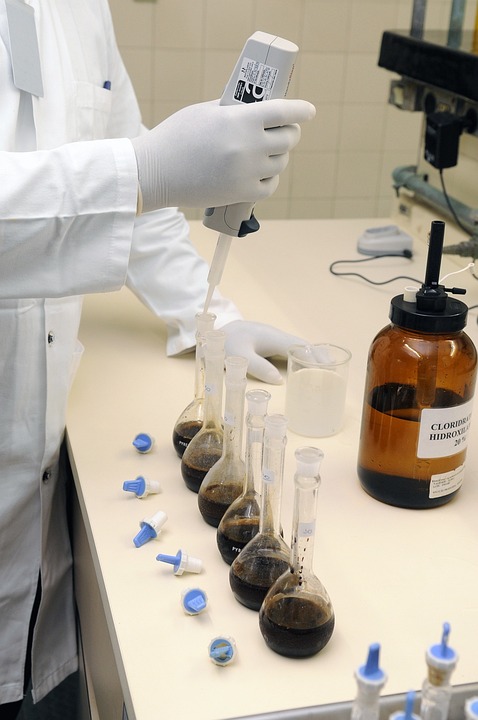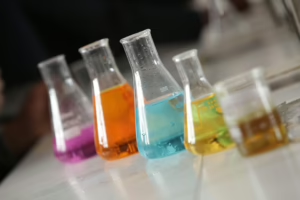The Building Blocks: Understanding the Foundations of Chemistry
Chemistry is often referred to as the "central science" because it connects and overlaps with physics, biology, and environmental science. Understanding its foundational concepts is essential not only for chemists but also for anyone looking to grasp the intricacies of the world around us. In this article, we will explore the building blocks of chemistry, focusing on the fundamental concepts, structures, and principles that underpin this fascinating field.
The Basic Concepts of Chemistry
Atoms and Elements
Everything in the universe is made up of atoms, which are the smallest units of matter. Atoms consist of three main subatomic particles: protons, neutrons, and electrons. Protons carry a positive charge, neutrons are neutral, and electrons have a negative charge.
Each element is defined by the number of protons in its nucleus, known as the atomic number. For instance, hydrogen has one proton (atomic number 1), while carbon has six protons (atomic number 6). The periodic table organizes elements based on their atomic numbers, allowing for an easy understanding of their relationships and properties.
Molecules and Compounds
Atoms can bond together to form molecules. A molecule is a group of two or more atoms bonded together, which can be the same (such as O₂) or different (such as H₂O). When different types of atoms combine in fixed ratios, they create compounds. Water (H₂O) is a compound composed of two hydrogen atoms and one oxygen atom.
Ionic and Covalent Bonds
Bonds between atoms are primarily ionic or covalent.
-
Ionic Bonds: Formed when one atom donates an electron to another, resulting in positively and negatively charged ions that attract each other. For example, sodium chloride (NaCl) is formed through an ionic bond between sodium (Na⁺) and chloride (Cl⁻).
- Covalent Bonds: Occur when two atoms share electrons to achieve a full outer shell of electrons, which is often more stable. In a water molecule, oxygen forms covalent bonds with two hydrogen atoms.
Understanding these types of bonds is vital, as they dictate the properties and reactivity of substances.
Chemical Reactions
Chemical reactions occur when substances undergo a transformation to form new substances. This happens through the breaking and forming of bonds. For example, the combustion of methane (CH₄) in the presence of oxygen (O₂) produces carbon dioxide (CO₂) and water (H₂O):
[ \text{CH}_4 + 2\text{O}_2 \rightarrow \text{CO}_2 + 2\text{H}_2\text{O} ]Reactions can be classified into various types, including synthesis, decomposition, single replacement, and double replacement reactions.
The Law of Conservation of Mass
One of the fundamental principles in chemistry is the Law of Conservation of Mass, which states that mass is neither created nor destroyed in a chemical reaction. This means that the total mass of the reactants always equals the total mass of the products.
The Role of Energy in Chemistry
Chemical reactions are often accompanied by energy changes. Energy can be absorbed or released in reactions, and this plays a critical role in determining whether a reaction occurs.
-
Exothermic Reactions: These release energy, typically in the form of heat. The combustion of fuels is an example.
- Endothermic Reactions: These absorb energy from their surroundings. Photosynthesis in plants is a classic case, where sunlight is absorbed to convert carbon dioxide and water into glucose and oxygen.
Understanding these energy changes helps chemists predict the behavior of substances under different conditions.
The Mole Concept
The mole is a fundamental concept in chemistry that allows scientists to count particles by weighing them. One mole of any substance contains (6.022 \times 10^{23}) particles (atoms, molecules, etc.), a number known as Avogadro’s number.
Stoichiometry
Stoichiometry is the calculation of reactants and products in chemical reactions. It is based on the principles of the mole and allows chemists to predict the quantities of substances consumed and produced in a reaction.
For instance, in the reaction of hydrogen and oxygen to form water:
[ 2\text{H}_2 + \text{O}_2 \rightarrow 2\text{H}_2\text{O} ]This equation tells us that two moles of hydrogen react with one mole of oxygen to produce two moles of water.
The Structure of Atoms
The Nucleus
The nucleus is the central part of an atom, made up of protons and neutrons. The number of protons determines the element’s identity, while the number of neutrons can vary, leading to different isotopes of the same element.
- Isotopes: Variants of an element that have the same number of protons but different numbers of neutrons. For example, carbon-12 and carbon-14 are isotopes of carbon, with 6 and 8 neutrons, respectively.
Electron Shells and Orbitals
Electrons occupy specific energy levels or shells around the nucleus. These shells have sublevels known as orbitals, where electrons are likely to be found. The arrangement of electrons, known as the electron configuration, affects how an atom interacts with others.
The octet rule states that atoms are most stable when they have eight electrons in their outermost shell, which explains why atoms tend to bond with others to achieve this configuration.
The Periodic Table: A Window into Atomic Properties
The periodic table organizes elements based on their atomic structures and properties. Each element is placed in a specific location according to its atomic number and electron configuration.
Groups and Periods
-
Groups: Vertical columns in the periodic table. Elements in the same group share similar properties. For instance, Group 1 contains the alkali metals, which are highly reactive.
- Periods: Horizontal rows. As you move across a period from left to right, the properties of elements change from metallic to nonmetallic.
Trends in the Periodic Table
Various trends can be observed in the periodic table, including:
-
Atomic Radius: Generally decreases across a period due to increased nuclear charge, which pulls electrons closer to the nucleus.
-
Ionization Energy: The energy required to remove an electron from an atom. It generally increases across a period and decreases down a group.
- Electronegativity: A measure of an atom’s ability to attract electrons in a bond. It tends to increase across a period and decrease down a group.
Understanding these trends is crucial for predicting the behavior of elements and their compounds.
Chemical Bonding and Molecular Geometry
VSEPR Theory
The Valence Shell Electron Pair Repulsion (VSEPR) theory helps predict the geometry of molecules based on the repulsions between electron pairs surrounding a central atom. For example, water (H₂O) has a bent shape due to the two pairs of unshared electrons on the oxygen atom that repel the bonding pairs.
Hybridization
Hybridization is another concept that describes the mixing of atomic orbitals to form new hybrid orbitals. This occurs in molecules like methane (CH₄), where one s and three p orbitals combine to form four equivalent sp³ hybrid orbitals, allowing for tetrahedral geometry.
Intermolecular Forces
Molecules interact with each other through intermolecular forces, which affect their physical properties. These include:
-
London Dispersion Forces: Weakest interactions arising from temporary dipoles created by fluctuations in electron density.
-
Dipole-Dipole Interactions: Occur between polar molecules with permanent dipoles.
- Hydrogen Bonds: Stronger interactions that occur when hydrogen is bonded to highly electronegative atoms like nitrogen, oxygen, or fluorine.
Understanding these forces helps explain boiling and melting points, solubility, and other physical properties of substances.
Acids, Bases, and pH
Definitions
Acids and bases are important categories of substances in chemistry.
-
Acids: Substances that donate protons (H⁺ ions) in a solution. For example, hydrochloric acid (HCl) dissociates in water to produce H⁺ and Cl⁻ ions.
- Bases: Substances that accept protons or donate hydroxide ions (OH⁻). Sodium hydroxide (NaOH) is a common base that dissociates to release Na⁺ and OH⁻ ions.
pH Scale
The pH scale measures the acidity or basicity of a solution. It ranges from 0 to 14, where:
- pH < 7: Acidic
- pH = 7: Neutral
- pH > 7: Basic
Each unit change on the pH scale represents a tenfold change in hydrogen ion concentration. This concept is crucial for understanding many chemical reactions and biological processes.
Organic Chemistry: The Chemistry of Life
Carbon Compounds
Organic chemistry focuses on carbon-based compounds, which are fundamental to life. Carbon’s unique ability to form four stable covalent bonds allows for a staggering variety of structures, ranging from simple molecules to complex macromolecules such as proteins and nucleic acids.
Functional Groups
Functional groups are specific groups of atoms within molecules that have characteristic properties and reactions. Examples include:
-
Hydroxyl Group (-OH): Found in alcohols and contributes to their polar nature.
- Carboxyl Group (-COOH): Found in acids, such as acetic acid, which can donate protons.
Biochemistry
Biochemistry is the branch of chemistry that explores the chemical processes occurring within living organisms. Key areas include:
-
Proteins: Made up of amino acid chains, proteins serve as enzymes, structural components, and signaling molecules.
-
Carbohydrates: Sugars and starches, which provide energy.
-
Nucleic Acids: DNA and RNA, responsible for genetic information and protein synthesis.
- Lipids: Fats and oils, which are essential for cell membranes and energy storage.
Understanding these macromolecules is fundamental to the study of life sciences and medicine.
Conclusion: The Interconnected Nature of Chemistry
Chemistry provides a framework for understanding the natural world through the study of matter, its properties, and the changes it undergoes. From the smallest atomic structures to the complex biochemistry of life, the principles of chemistry are fundamental to all scientific disciplines.
By exploring the building blocks of chemistry, we gain valuable insights into the processes that shape our universe, the advancements in technology, and the innovations in medicine that improve our quality of life. Whether you aspire to be a chemist, a doctor, a biologist, or simply want to understand the world better, a solid foundation in chemistry is invaluable.
References
- Atkins, P. W. & Friedman, R. (2011). Molecular Quantum Mechanics. Oxford University Press.
- Zumdahl, S. S., & Zumdahl, D. J. (2013). Chemistry. Cengage Learning.
- Garrett, R. & Grisham, C. (2017). Biochemistry. Cengage Learning.
- Brown, T. L., LeMay, H. E., & Bursten, B. E. (2018). Chemistry: The Central Science. Pearson.
This article presents a comprehensive overview of the foundations of chemistry while incorporating fundamental concepts, classification systems, molecular structures, and the interplay of chemistry within biological systems. Each section builds upon the last, offering a modular understanding that serves both as an introduction for novices and a refresher for those familiar with the subject.
























Add Comment